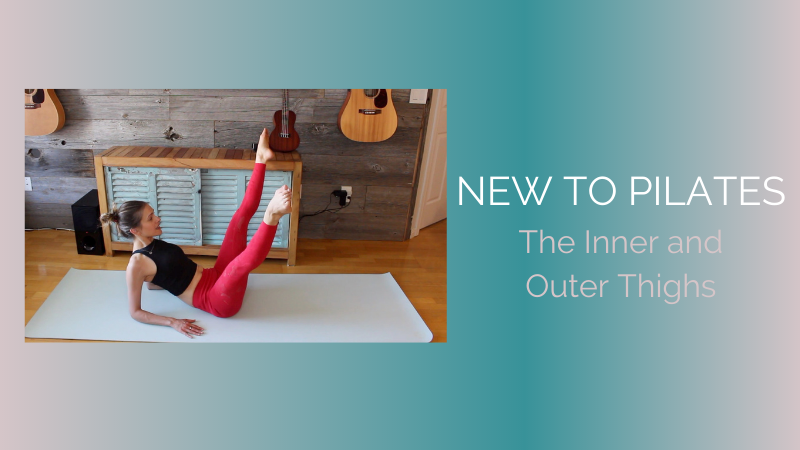Why are the inner thighs so important?
In Pilates, we spend a lot of time focusing on the muscles surrounding and supporting the pelvis and spine. The pelvis and the spine are obviously very important for posture and weight distribution while walking (ie. balance) and finding an equilibrium in these structures leads to less pain in the back and hips.
But let’s take a moment to do a little imagination work. Image a tuning fork or a wishbone. Think of the pelvis and spine as the curve and stem of the tuning fork or wishbone. What supports that part of the structure? The prongs; or in our case, the legs, and an important muscle group of the legs are the inner thighs.
The inner thighs are made up of five muscles that connect at the pelvis and run down the inside of the femur bone. These muscles are primarily responsible for adduction (bringing the leg IN toward and past the mid-line of the body). They help in flexion and extension of the hip and flexion and medial (internal) rotation of the knee.
They also support the pelvic floor as there is a fascial line (the Deep Front Line) that runs from the inner thighs into the pelvic floor.
All this to say: the inner thighs are a very important muscle group that deserves to live in the spot light a little more and that is exactly what I am doing with this week’s class.
This week’s new release workout on Rebalance Pilates at Home is a New to Pilates class focusing on the Inner Thighs. We will work the inner thighs in all positions.
Key things to remember with the inner thighs:
1) Allow the inner thighs to lengthen. In the fitness world, there is a strong emphasis on the contraction of muscles. In Pilates, we are just as interested in the lengthening of the muscle. This is important with the inner thighs because if we don’t allow the muscles to lengthen, we will most likely arch the low back to make the movement happen. This not only doesn’t work the inner thighs but does a disservice to your lumbar spine.
2) The connection between the inner thighs and the pelvic floor is very important. Because of the fascial connection, the pelvic floor is affected by inner thigh engagement. If you visualize the inner thighs lengthening away (again that length!) from the pelvic floor, it will be kinder to the facisal tissue, which allows for more release and ultimately, a greater range of movement. Similarly, if you focus on the inner thighs drawing in toward the public bone you will get a good resonance of engagement from inner thighs to pelvic floor. And as we all know, proper pelvic floor activation is a key component in supporting, well… everything.
3) Listen to your body. The inner thighs don’t get as much love as bigger muscle groups like glutes, quads and hamstrings. Be kind to them. The last thing we want is a groin pull. The groin is the area where your abs meet the top of your leg (around where the inner thigh attaches to the pubic bone). A groin strain is a muscle pull around that inner thigh connection. If you have ever experienced one, you know they are painful and can take a long time to recover from. So listen to your body. Stop if you feel the muscle is too fatigued to continue the exercise. Take a break and come back. Your body will thank you for this consideration.
All that said, enjoy this class! It’s fun to challenge the body in new ways and this class offers some pretty fun exercises to add into your overall fitness routine.
Cheers,
Robyn


0 Comments